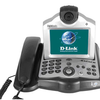Do you fire up your Gmail client to send an email to another Gmail user? And would that email fail to arrive if you used Outlook instead? Of course not and it's all down to the standard email protocol called SMTP. Every email client supports it so you don't have to worry what the other person is using. Likewise, HTTP delivers web content regardless of the browser being used.
This has always been the promise of SIP (the Session Initiation Protocol). Designed to establish, manage and 'tear down' communication channels between any media device, anywhere. Sound good?
SIP in Unified Communications
I'm not going to give you a definition of Unified Communications (UC) here, just hit Google and wade through all the interpretations that pop up. I do however, want to talk about how SIP 'underpins' UC.
It does this by ensuring that all elements of a business UC solution can establish connections to work together. It also allows for 'mid session' information to be passed between these elements to enhance the communications experience. A good example of this is starting up a whiteboard application with a colleague to give your existing conversation another dimension.
SIP/SIMPLE
Now UC isn't just about Instant Messaging, but I need to start somewhere.
The IETF SIMPLE (SIP for Instant Messaging and Presence Leveraging Extensions) working group focuses on the application of SIP to Instant messaging (IM) and Presence services. Invariably their work will affect any UC solution.
Now you may not know this, but when you use IM you become a 'Presentity'. That is, you are an 'entity' with a presence state i.e. online, not available etc. So now, if someone wants to see your presence state, their IM client sends a SIP SUBSCRIBE message to your IM server to 'follow' you. If you change your presence state i.e. off to lunch your IM client will send a NOTIFY message to your 'followers'. All of this is defined in RFC 3265, overseen by the SIMPLE working group.
They have also overseen the development of a number of RFCs that cover how presence information is coded in XML documents. These documents are carried in the body of a SIP message and the use of XML here can be taken advantage of by applications to facilitate interoperability and automation of business processes.
SIP/SIMPLE in Action
So, in the background SIP/SIMPLE is delivering (to you) presence state updates for the people you are following. Click on a 'buddy' to start a chat and SIP will carry the message. If you now want to speak with your friend, 'click to call' and SIP sets up the channel through an INVITE. Whilst you are talking you can fire up your Webcam and SIP will establish this connection for you without affecting your voice connection. Don't forget you can bring another person in on the conversation by initiating a conference; SIP can take care of that as well. In effect, it's SIP that connects everything together though it's important to remember that it's the applications being used that are making people more effective in their work.
Open Sesame
Because SIP is an open standard, all UC solutions should be able to work with each other seamlessly. Unfortunately, although everyone has their own presence capability there is no way to 'federate' (or join) them.
Today, if you are on a Cisco system you can't see who is present on an Avaya system. Maybe they'd just like you to buy their solution.
The push for Federations
But hold on! Microsoft and IBM announced (at Voicecon Orlando) that they will support Intra-domain federation so that a company with UC solutions from these two vendors will be a step closer to full UC support regardless of platform and client. Will this 'shake up' other manufacturers into doing the same? And how long will it be until SIP gives us the same 'transparent' interoperability that SMTP and HTTP do? Only time will tell.
For more information on SIP training and SSCA™ certification, visit - www.thesipschool.com











Leave a comment